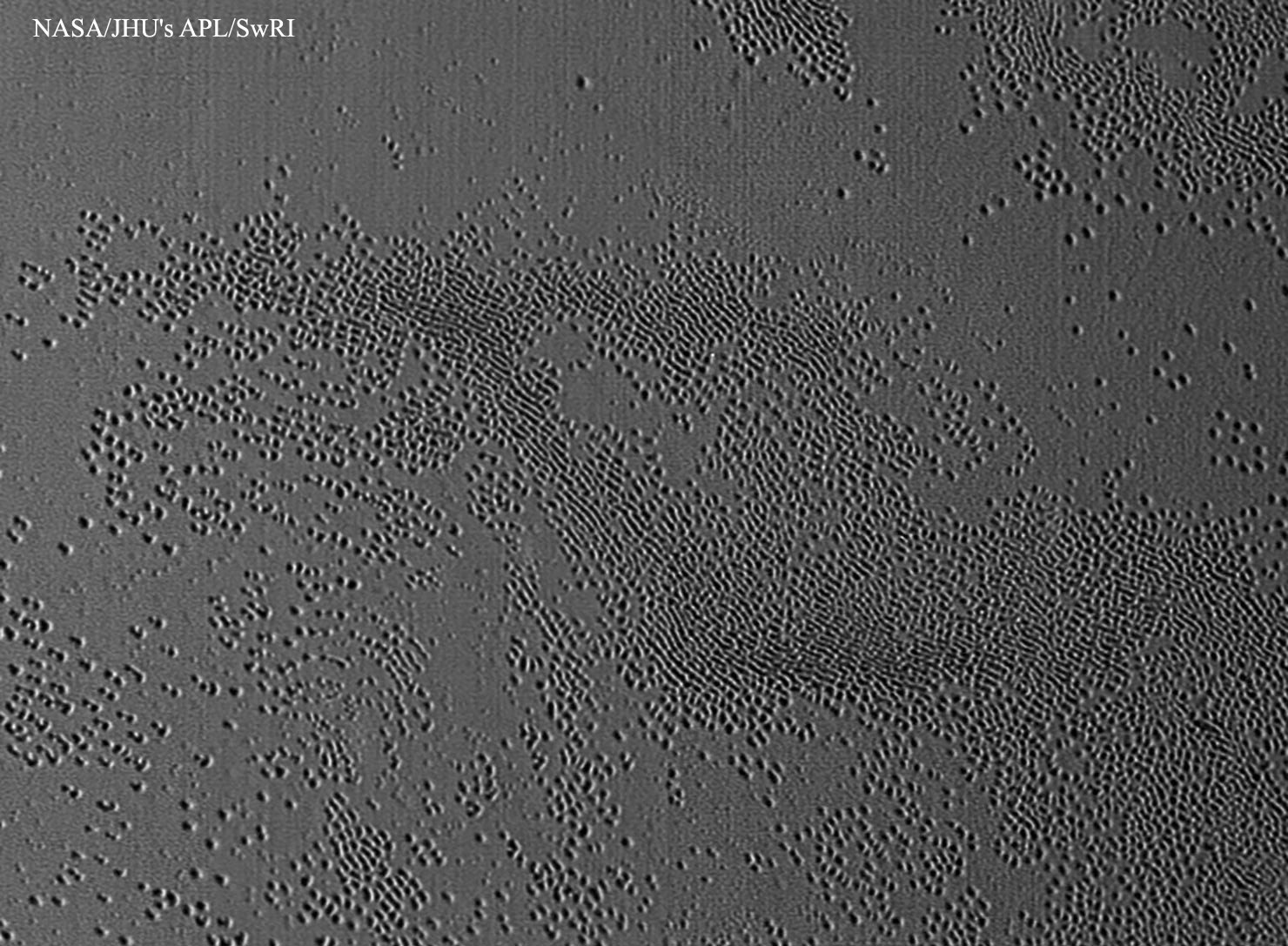Apologies if you’ve seen this, but it’s new to me.
http://pluto.jhuapl.edu/News-Center/News-Article.php?page=20151109
From possible ice volcanoes to geologically diverse surfaces to oddly behaving moons that could have formed through mergers of smaller moons, Pluto system discoveries continue to surprise scientists on NASA’s New Horizons mission team. The New Horizons team is discussing numerous findings at the 47th Annual Meeting of the Division for Planetary Sciences (DPS) of the American Astronomical Society (AAS). Just four months after the spacecraft encountered Pluto, science team members are presenting more than 50 reports on exciting discoveries.

These two mountains have central craters (in bluer colours) suggesting that they’re ice volcanoes.
The distribution of 1,000 craters indicates a wide range of surface ages, which means that Pluto has been geologically active throughout its history.
“The absence of small craters on Pluto and Charon support models theorizing that Kuiper Belt objects formed directly at their current large size.”
Pluto’s small satellites are spinning much faster than expected, with Hydra rotating an unprecedented 89 times during a single lap around Pluto.
Pluto’s upper atmosphere is significantly colder and therefore more compact than Earth-based models had indicated. As a result, scientists have discovered that Pluto’s atmospheric escape rate is thousands of times lower than had been thought.

